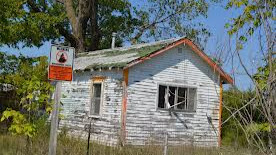Austin Drainage Failure – Cause and Repair
 Residential ground surface storm drain systems must transport excess moisture away from designated areas where excess water would otherwise prevent the normal use of a residential property. If rainfall is allowed to pond or collect next to a structure built on expansive soil, the structure may be subjected to unscheduled distress caused by swelling bearing soils due to increased soil moisture content. Lot surfaces must be graded to drain away from the structure in accord with the International Residential Code R401.3. Likewise, perpetually moist ground surfaces limit recreational use of residential yard areas, and can become a breeding ground for disease carrying insect infestations. Water must freely exit the property to assure unrestricted, healthy, and environmentally safe use of land areas within residential property boundaries.
Residential ground surface storm drain systems must transport excess moisture away from designated areas where excess water would otherwise prevent the normal use of a residential property. If rainfall is allowed to pond or collect next to a structure built on expansive soil, the structure may be subjected to unscheduled distress caused by swelling bearing soils due to increased soil moisture content. Lot surfaces must be graded to drain away from the structure in accord with the International Residential Code R401.3. Likewise, perpetually moist ground surfaces limit recreational use of residential yard areas, and can become a breeding ground for disease carrying insect infestations. Water must freely exit the property to assure unrestricted, healthy, and environmentally safe use of land areas within residential property boundaries.
Drainage Improvement Guidelines and Criteria.
Section 7.3 of the ASCE provides the following non-structural guidance and criteria for improving or modifying residential storm water drainage systems:
-
Install a Roof Rain Gutter System (ASCE, section 7.34). Uncontrolled roof rainfall runoff can erode the ground surface along the foundation perimeter and creates a moisture imbalance along the foundation perimeter. Variances in bearing soil moisture content distribution along the foundation perimeter can result in unscheduled foundation system vertical displacement and rotational movement. Rain gutters and downspouts should be placed along the entire house perimeter eave lines where the sloping roofline discharges rainfall runoff. The gutters will capture and convey roof rainfall runoff into downspouts. The runoff then discharges onto the ground surface swale, or into a subsurface solid pipe drain system. This type of gutter system will help end ground surface erosion and prevent excess water accumulations near the foundation system.
-
Improve or Modify Existing Ground Surface System (ASCE, section 7.35). The following criteria may be used to improve or change the existing ground surface drainage system:
-
Surface Grading along the Foundation perimeter. A minimum slope of 5% (6″ fall per 10′) away from the foundation perimeter should be provided for adjacent ground areas.
-
Ground surface swales parallel to the house walls (rear yard and both side yards) shall have longitudinal slopes of at least 2% (6″ per 25′) if practical, and 1% (3″ per 25′) minimum.
-
Eroded surfaces should be replaced with vegetated surfaces.
-
Gaps between concrete surfaces along the foundation system perimeter that allow surface water to infiltrate into the foundation bearing soils should be eliminated.
-
Concrete surfaces that may allow water to flow towards the foundation system perimeter should be modified to direct water away from the foundation perimeter.
-
Erosion Control. Ground cover should be placed in areas where ground surface erosion currently exists.
-
Surface Water Drainage Option A. The ground surface should be graded to slope to one or more subsurface solid drainpipe (plastic or PVC) single collector inlets or continuous grate type rectangular inlets. The drain inlets should be located to drain excess water from the side and rear yards and discharge to daylight in the front yard. The street serves as the drain outfall where storm water is directed into street gutter inlets. Cleanouts should be provided at 50 feet intervals for proper maintenance. Roof rainfall gutter downspouts may be connected to the subsurface solid pipe system provided the pipe has sufficient capacity to prevent a backwater condition. The pipe should have a minimum slope of 1% to the daylight discharge. In any case, the ground surface slope along the foundation perimeter must comply with local building code requirements.
-
Subsurface Water Drainage Option B. Subsurface water drains are proper to control surface water runoff. They may consist of a perforated pipe placed in an aggregate filled trench (french drain) along with an optional filter fabric to prevent pipe stoppages. The pipe should have a minimum slope of 1% to the surface outfall. Cleanouts should be provided at 50 feet intervals for maintenance. In any case, the ground surface slope along the foundation perimeter must comply with local code requirements. Gutter downspouts should not be connected to a perforated pipe system.
-
Monitor foundation performance after completing drainage improvement measures to assure their satisfactory implementation.
Recommended drainage improvements, including Option A and Option B above respond to the requirements of section 5.8 “Remediation Criteria” of the ASCE Guidelines and does not constitute an engineering or construction design document. The above guidelines and criteria are for planning and pricing purposes and require an on-site civil survey and geotechnical evaluation when the work is done.
Austin Drainage Failure – Cause and Repair Austin Drainage Failure – Cause and Repair Austin Drainage Failure – Cause and Repair Austin Drainage Failure – Cause and Repair Austin Drainage Failure – Cause and Repair